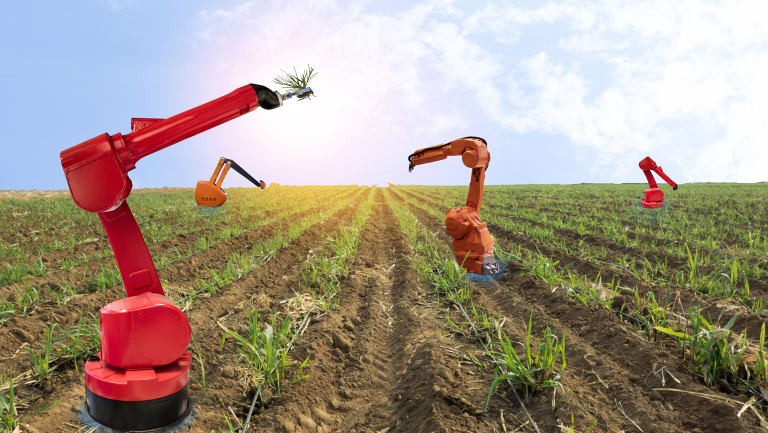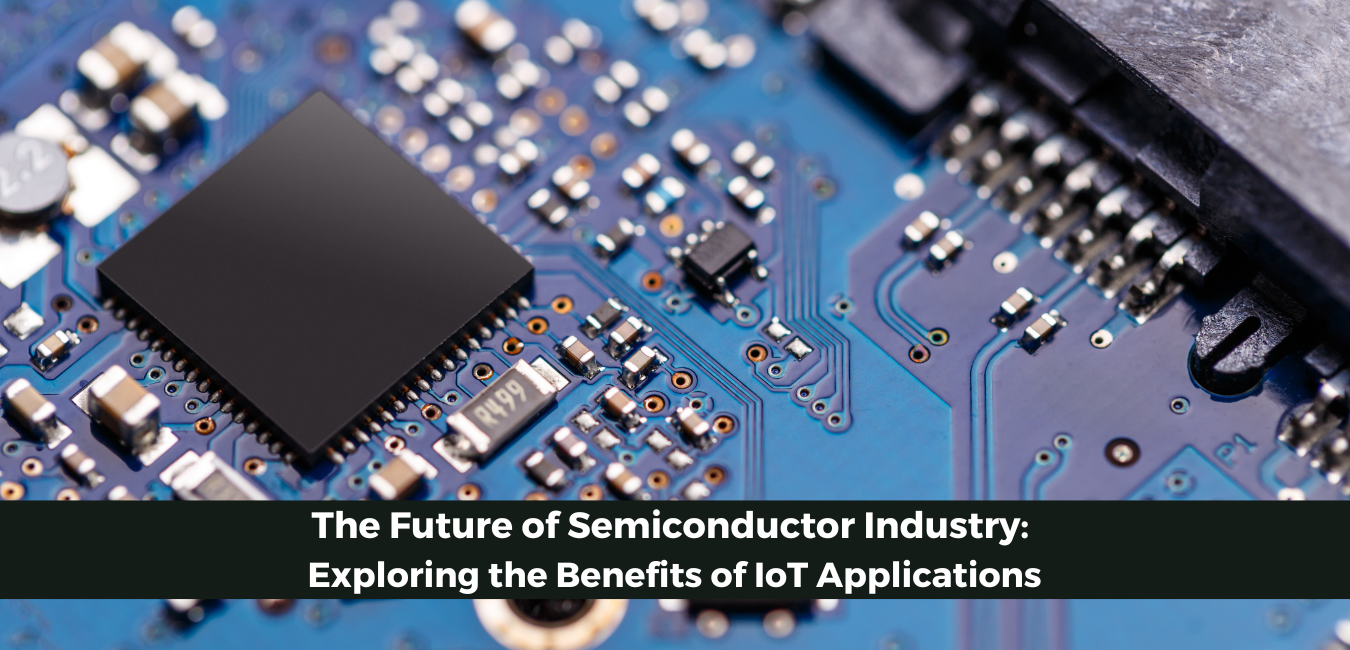Robots are transforming the agriculture and farming industry

“Agriculture's development was a turning point in human history. The ability of fully-modern humans to engineer the environment to provide enough food to sustain tremendous population expansion was the first major shift in their interaction with the environment. Agriculture ushered in a slew of innovations, ranging from the use of fire and prepared food to self-driving machinery.”
Modern agriculture has been totally revolutionized by technological developments ranging from robotics and drones to computer vision software. Farmers now have access to instruments that will assist them in meeting the growing demands of our world's population.
What does farm automation entail?
Farm automation, sometimes known as "smart farming," is a type of technology that improves farm efficiency by automating the crop or livestock production cycle. Drones, autonomous tractors, robotic harvesters, automatic watering, and seeding robots are all being developed by a growing number of companies. Despite the fact that these technologies are still relatively new, an increasing number of traditional agriculture enterprises are incorporating farm automation into their operations.
Urban/indoor farming
With the concept of indoor and urban farming, robotics is assisting agriculture in becoming vertical. In order to make the most of limited space in urban locations, technology has enabled greenhouses to function 24 hours a day, resulting in yields per square foot that are more than ten times higher than traditional farming.
This was accomplished in part by using LEDs to optimize the light spectrum for photosynthesis, accurate nutrient administration, and automated harvesting. While urban farming decreases the environmental impact of food transportation, these operations still consume a lot of energy and have only been economical for high-value crops. The popularity of these applications will undoubtedly rise as robot efficiency improves and consumer desire for local food remains strong.
Automated Harvesting
Fruit and vegetable harvesting has always been a challenging challenge to automate. To avoid bruising and damage, harvest robots must be delicate with the produce. Agrobot has invented the world's first robot for harvesting strawberries gently, regardless of where or how they are cultivated. Up to 24 robotic manipulators work together from a mobile platform to pick the fruit that fulfils the farmer's quality criteria.
Autonomous Tractors
Tractors that are self-driving can be controlled remotely or even pre-programmed to provide a farmer complete autonomy. Rabbit Tractor's autonomous tractor provides value to row crop producers not only by lowering labor expenses, but also by increasing operational efficiency and productivity. Bear Flag Robotics is even developing tractor automation kits that make automation more accessible to farmers by retrofitting current tractors with cutting-edge driverless technology and implement control at a low cost.
Weeding and seeding
Seeding and weeding robots can be programmed to target specific agricultural patches. This can easily reduce labor and tedious duties on the farm when seeding. With computer vision, weeding robotics can be extremely accurate and minimize pesticide usage by 90%. Blue River Technology uses computer vision and robots to spray herbicides precisely where they're needed and with exactly what's needed. Farmers now have a new tool to combat and avoid herbicide-resistant weeds.
UAVs (Unmanned Aerial Vehicles)
Drones can be used to remotely monitor conditions and potentially spray fertilizers, insecticides, and other treatments. They can also use imaging and infrared analysis to swiftly and cost-effectively identify problem regions, allowing farmers to address difficulties early on. American Robotics is working on a completely autonomous "Robot-as-a-Service" with an autonomous drone, base station, and analytics platform that will supply growers with insights at resolutions, frequencies, and speeds never seen before. Some of the most relevant applications of autonomous drones and the data they provide are:
- Crop monitoring
- Soil assessment
- Plant emergence and population
- Fertility
- Crop protection
- Crop insurance reporting in real time
- Irrigation and drainage planning
- Harvest planning
Farm automation's benefits
Farm automation technology handles important concerns such as population growth, labour shortages on farms, and shifting consumer demands. The advantages of automating traditional agricultural procedures are enormous.
Consumer Advantage
Organic and sustainably produced items are becoming more popular among consumers. Produce reaches consumers faster, fresher, and more sustainably thanks to automation technology. Increased productivity through automation increases yield and rate of production, which lowers consumer costs.
Labor Productivity
Labor accounts for more than half of the cost of running a farm, and 55 percent of farmers think labor shortages are a problem. As a result, 31% of farmers are switching to less labor-intensive crops. Harvest robots, on the other hand, have enormous promise. Routine chores can be automated using robotics technology, lowering labour costs and reducing the amount of people required in the agriculture industry, which is now experiencing a labour shortage. In three days, a single strawberry robot harvester could pick a 25-acre region and replace 30 farm laborers.
Environmental Impact is Reduced
Farm automation can help make agriculture more profitable while also decreasing its environmental impact. Pesticide and fertilizer use can be reduced while greenhouse gas emissions are reduced using site-specific application software.
Traceability with a blockchain boost
Agriculture companies are using blockchain technology, which was pioneered by bitcoin, to improve traceability from farm to fork. Consumers not only prefer, but are increasingly demanding, traceability in the aftermath of health-related occurrences.
Blockchain operates by scanning a barcode to map data and provide it to users throughout the value chain. Grading and sorting bots automatically apply and link these barcodes across the value chain.
Seeds, farm location, harvest, storage, supply chain, and end user data are all used to create thorough descriptions of the product throughout its life cycle. This information not only gives consumers with transparency and a farm-to-fork chronology, but it also helps producers decrease risks and optimize earnings by offering a cost-effective supply chain analysis.
Farm automation's challenges
Farm automation has some obstacles that must be overcome. Farmers, particularly in poor countries, have a significant barrier to entry due to the high expenses of adopting robotic technologies. Robotic planters, for example, must carry huge amounts of water or pesticides; the gear must be developed differently, resulting in increased expenses as a result of the increased size. Technical concerns and equipment breakdowns also result in significant repair costs for such specialized equipment. Farmers will need to combine their knowledge and experience with these new technologies in order to properly exploit farm automation.
Major Market Highlights:
- Abundant Robotics is the first commercial robotic apple harvester in the world. Their machines handle delicate fruits by pulling apples from the branch with a vacuum rather than claws or hand-like graspers.
- ecoRobotix is another firm that makes weeding robots; this is the first fully autonomous machine for weeding row crops, meadows, and intercropping in a more ecological and cost-effective manner.
- AGCO Corporation (US) released AGCO Connect in North America under the Fuse brand to give customers and dealers access to machine location data and diagnostics.
- AgJunction (US) and Swift Navigation (US) have announced a cooperation to develop low-cost, autonomous tractors for agricultural applications, bringing inexpensive solutions to farmers all over the world.
- Trimble (US) has released Farmer Core software, which integrates machine-generated data to make setup and operations for diverse farming activities easier. It's a low-cost software subscription that's available to farmers.
Conclusion: The revolution is around the corner
Seeding drones were merely a pipe dream of a few courageous developers a few years ago, and look where we are now. Drones and robots collaborate to create linked smart farms. They share information, convey signals, and assist agriculture in staying ten steps ahead of the competition and feeding billions of people.
Farm automation technology is still in its infancy, but it has the potential to revolutionize agriculture. By advancing technologies, production methods, and software, it paves the way for more sustainable and efficient agriculture. Every year, automation technology improves, and what was groundbreaking only a few years ago will soon be ordinary and cost-effective. Although the human element will always be important in farm management, fully autonomous cars and farm equipment are on the way.
While robotics in agriculture was first sluggish to gain traction, it is now poised to undergo a rapid transition. Investment in agricultural robotics firms is soaring, and with the world's population expected to exceed 10 billion by 2050, there is no sign of this trend slowing. The ability to feed more people with fewer resources is critical to the world's future, and robotic automation is the solution.








